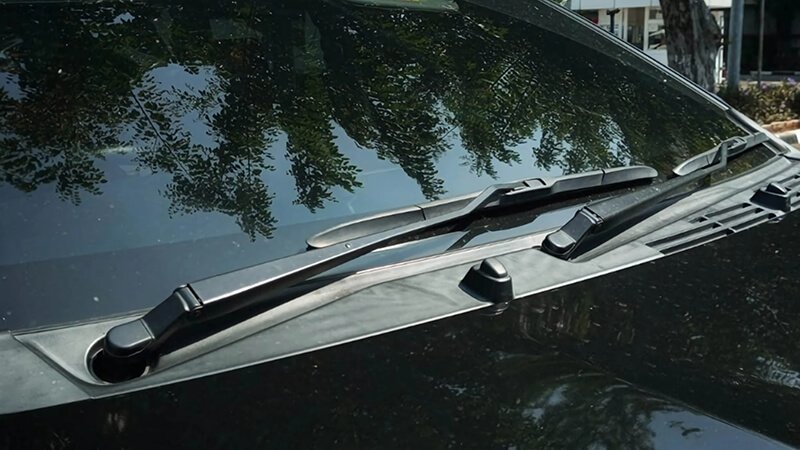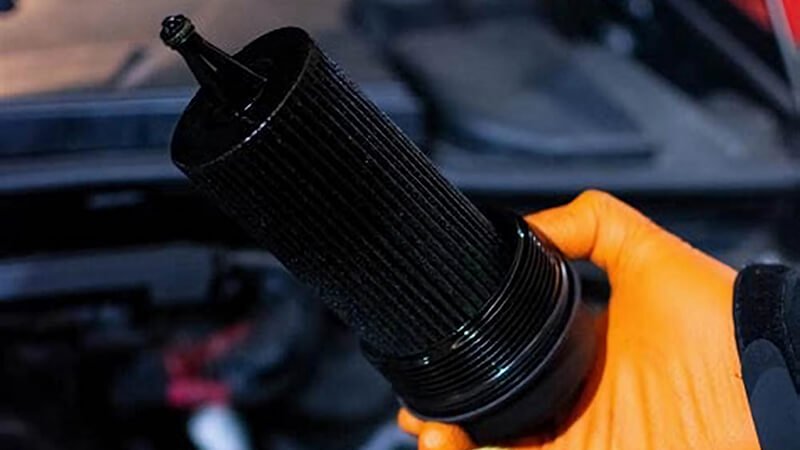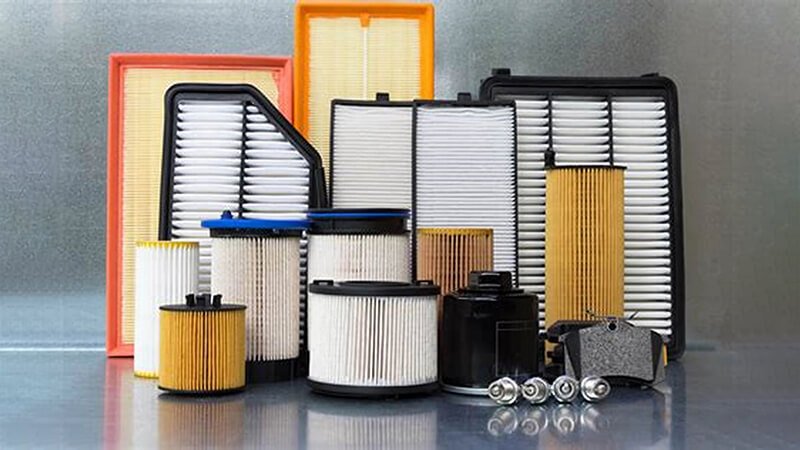I have always been fascinated by the journey of automotive parts from raw materials to finished products. Cabin filters, in particular, play a crucial role in maintaining healthy air inside vehicles. Yet many people never think about how these filters are made or why they matter.
Cabin filters are designed to keep vehicle interiors fresh and free from contaminants. In this article, I will walk you through how they are produced, what materials go into them, how pleating boosts their efficiency, and why activated carbon is often added. These insights will help you see why cabin filters are essential for a comfortable driving experience.
Let’s explore the intricate processes behind manufacturing cabin filters. I’ll look at each step in detail, highlighting how everything comes together to produce filters that keep vehicle cabins clean.

How are filters manufactured?
I remember my first visit to a filter production line. The machines whirred and clanked in steady rhythm, producing stack after stack of neatly cut filter media. I could see how much effort went into ensuring consistent quality. But what are the core steps involved in making these filters1?
Cabin filters go through key steps, including material selection2, cutting, layering, pleating, and final assembly. Each step matters for achieving maximum filtration capacity, durability, and airflow. Quality checks happen at different points to ensure the final product meets industry standards.
Filter manufacturing3 typically begins with selecting high-grade raw materials. For cabin filters, this often means specialized non-woven fabrics or synthetic fibers. When I walk through the factory floor at Runex Auto, I notice rows of these fabrics, carefully tested to confirm they meet internal standards. We choose them because they can capture tiny particles like dust, pollen, and even airborne pollutants without blocking airflow too much.
Once the material is approved, the cutting stage begins. Large machines trim the fabrics into specific dimensions. The precision here is vital because uneven cuts can lead to poor sealing when the filter is installed in the vehicle. After cutting, it’s time to layer the materials. Some cabin filters use single-layer construction, while others use multiple layers to improve filtering efficiency. Each layer can target a different category of contaminants.
Quality control at this stage is essential. Operators use specialized measuring tools to confirm the fabric’s thickness and density. I often see technicians spot-check samples on the production line. They test for tear strength, fiber consistency, and overall quality. If anything falls short, the batch is flagged, and adjustments are made to the machines or materials before proceeding. We use these checks to ensure consistency, so every filter performs similarly under the same conditions.
Next, the semi-finished materials move to the pleating and assembly stage, which are often combined on certain production lines. In these steps, filters gain the folds and structure needed to maximize surface area. As the final process in manufacturing, assembly also includes sealing the filters into frames or housings. This is the point where each filter takes on the shape you find when you open a vehicle’s cabin filter compartment. Finally, packaging and labeling complete the manufacturing cycle, marking each filter with batch codes for traceability.
Here is a simplified table of the manufacturing stages:
| Manufacturing Stage | Main Activity | Why It Matters |
|---|---|---|
| Material Selection | Choose suitable synthetic fibers | Ensures effective filtration |
| Cutting | Cut materials to precise dimensions | Prevents gaps and leaks |
| Layering | Stack media layers for better performance | Targets different particle sizes |
| Pleating & Assembly | Form folds, fit into frames or housings | Maximizes surface area and airflow |
| Quality Control | Test for consistency, measure thickness | Maintains product reliability |
| Packaging & Labeling | Prepare filters for shipment | Ensures traceability and protection |
Each of these steps is carried out with great attention. Over the years, I’ve learned that well-trained personnel and regular equipment maintenance are two pillars that keep filter manufacturing efficient and reliable.

What are cabin air filters made of?
When I first researched cabin filters, I was amazed to learn that they aren’t just simple bits of cloth. The materials that go into them are specifically chosen for filtration, durability, and even odor reduction4. This makes the materials themselves just as fascinating as the final product.
Cabin filters usually combine synthetic fiber layers, often reinforced with additives like activated carbon5. These fibers trap fine particles, while the carbon layer helps neutralize odors. The result is a filter designed to keep vehicle interiors fresh and safe for occupants.
In most automotive cabin filters, synthetic fibers6 such as polyester or polypropylene form the primary filtration layer. I often get asked why synthetic fibers are preferred. The reason is simple: they resist moisture, they don’t degrade quickly, and they can be engineered to capture very fine particles. Additionally, these fibers maintain a balance between filtration efficiency and airflow. If the fibers are too dense, airflow decreases, which strains the HVAC system. If they are too loose, contaminants pass through easily.
Some filters include multiple layers of media, each with a different function. The outer layer can catch larger particles, like dust and leaves, while a finer inner layer captures microscopic elements like soot, pollen, or even spores. This layered design ensures that the filter is not overloaded too quickly by big particles and that the smaller, more harmful contaminants also get trapped. I like to compare it to having both a security guard who stops obvious threats at the gate and a more detailed screening process inside.
An additional or optional layer in many cabin filters is an anti-microbial or anti-bacterial coating. At Runex Auto, we sometimes offer filters enhanced with specialized coatings if customers request a more robust level of protection. This layer can help reduce the spread of bacteria, mold, or other microorganisms. In humid environments, such coating can make a noticeable difference in preventing unpleasant odors and maintaining healthy air circulation.
Below is a breakdown of common materials in a cabin filter:
| Material/Layer | Purpose | Typical Benefit |
|---|---|---|
| Synthetic Fiber (Main) | Captures dust, pollen, debris | Maintains airflow while filtering out contaminants |
| Pre-Filtration Layer | Traps larger particles like leaves | Prolongs life of finer filtration layers |
| Anti-Bacterial Coating | Reduces microorganisms and mold growth | Keeps air fresher, prevents odor |
| Activated Carbon | Adsorbs odors, gases, fumes | Removes unpleasant smells and harmful VOCs |
Another important consideration is the filter frame. In many cases, the frame is made from plastic or rubber-like materials that can withstand temperature changes and resist warping. I often see design efforts going into frames so they seal well against the HVAC housing. This keeps unfiltered air from bypassing the filter edges.
When I think about our production process at Runex Auto, I find that consistent quality checks of each material component are essential. We test for tensile strength, thickness, and overall reliability. By combining high-performance synthetic fibers, robust support layers, optional antimicrobial coatings, and sometimes activated carbon, we produce filters that deliver on both efficiency and longevity. These choices in materials directly translate to how well the cabin filter keeps the in-car environment safe and comfortable over its service life.

How does the pleating process enhance the filtering efficiency of cabin filters?
I used to believe that the folds in a filter were only for fitting purposes. But once I learned about pleating7, I realized it’s a brilliant method for boosting a filter’s efficiency without taking up more space. The concept is simple, yet very powerful.
Pleating the filtration media increases surface area8, allowing the filter to capture more contaminants without restricting airflow. This design extends the filter’s lifespan, ensures even particle distribution, and avoids airflow blockages that can reduce HVAC efficiency.
Pleating involves creating multiple uniform9 folds in the filter media, which transforms a flat sheet of material into a compact but high-surface-area structure. One might wonder why having more surface area matters. It’s because particles have more opportunities to land on the filter’s fibers, which improves the overall capture rate. A simple analogy is an accordion: if you stretch it out, you get a surprising amount of material in a small space. The same logic applies to cabin filters.
When I first observed how pleats are formed at Runex Auto, I noticed the high precision of the machines. They create folds at specific intervals to maintain consistent spacing. If the pleats are not uniform, some areas may become more restrictive to airflow, while others may allow too many particles through. Correct spacing ensures even distribution of particles, which helps the filter last longer before reaching its maximum holding capacity.
Another benefit of pleating is that it helps with structural support. Folds lend rigidity to the filter media, so it resists collapsing or bending under airflow pressure. This feature is crucial in a car’s HVAC system, where airflow can be quite strong at higher fan speeds. A filter that bows or warps risks letting unfiltered air pass around the edges, undermining the filter’s purpose entirely.
It’s also worth noting that pleating can align with different performance goals. For instance, deeper pleats often mean greater dust-holding capacity, but you must ensure that the pleat design still fits the HVAC housing properly. Too many pleats in a smaller frame could pinch or distort the media, reducing effectiveness. Our engineering teams sometimes experiment with different pleat patterns to find the ideal balance for both performance and fit.
Here is an overview of how pleating impacts efficiency:
| Pleating Factor | Effect on Efficiency | Additional Points |
|---|---|---|
| Surface Area Increase | More fibers available to trap contaminants | Improves dust-holding capacity |
| Uniform Pleat Spacing | Consistent airflow and particle capture | Reduces risk of uneven loading |
| Structural Support | Prevents bowing or collapse under airflow | Ensures a tight seal in HVAC system |
| Lifespan Extension | Delays full saturation of the filter media | Saves on replacement costs |
Overall, the pleating process is a masterful way to pack high filtration capacity into a compact design. I see it as one of the key reasons modern cabin filters can handle everything from pollen to microscopic pollutants without sacrificing airflow.

What role does activated carbon play in cabin air filters?
Many people notice a difference in air quality when they switch to an activated carbon10 cabin filter, but they aren’t always sure why. I had the same question before working closely with these materials.
Activated carbon is added to cabin filters to capture odors, harmful gases, and volatile organic compounds. It absorbs these elements on a molecular level, helping to keep your vehicle’s interior smelling fresh while also improving overall air purity.
Activated carbon, often referred to as activated charcoal, is a form of carbon processed to have a large number of tiny pores. These pores significantly increase the carbon’s surface area11, giving it remarkable absorbing capabilities. In the context of cabin filters, this means harmful or unpleasant molecules can bind to the carbon instead of circulating through the air. Over time, I’ve learned that this feature is invaluable for drivers who deal with strong traffic fumes, industrial pollution, or even natural odors like dampness or mustiness.
The introduction of activated carbon12 into a cabin filter does not replace standard particulate filtration. Instead, it works alongside the synthetic fiber layers to offer more comprehensive protection. For instance, dust or pollen is captured by the fibers, while activated carbon targets chemical compounds like exhaust gases or even certain allergens that pass through standard fibers. By handling both solid particles and gaseous pollutants, an activated carbon filter offers a well-rounded defense for the vehicle’s cabin environment.
At Runex Auto, we create some filters with an additional activated carbon layer bonded to the main filter media. This process requires careful bonding so that the carbon granules or layer don’t loosen over time. We also test the filters for pressure drop to ensure the carbon layer doesn’t overly restrict airflow. Striking the right balance between odor adsorption and airflow is essential. We want to keep the interior free from odors without putting extra strain on the car’s HVAC system.
One notable point is that while activated carbon is excellent at trapping certain gases and smells, it does have a finite capacity. Over time, the carbon saturates. That’s why I always recommend following the manufacturer’s guidance on filter replacement intervals, especially for carbon-activated filters. In high-pollution areas, frequent changes might be needed to keep air quality at a high level.
Below is a short comparison of standard cabin filters versus activated carbon cabin filters:
| Feature | Standard Cabin Filter | Activated Carbon Cabin Filter |
|---|---|---|
| Particle Filtration | Traps dust, pollen, and debris | Traps dust, pollen, debris as well |
| Odor/Gas Filtration | Limited | High adsorption of odors, fumes, VOCs |
| Airflow Restriction | Typically low | Slightly higher, but optimized in good designs |
| Best Use Case | Normal driving conditions, minimal odors | Heavy traffic, polluted areas, odor-sensitive users |
If you drive in areas with lots of traffic congestion or where strong smells are common, an activated carbon cabin filter can make a noticeable difference. It can also help if someone in the vehicle is sensitive to odors or chemicals. Personally, I have grown to appreciate the comfort of breathing cleaner, fresher air during my commutes. This small addition to a cabin filter can greatly enhance the overall driving experience.

Conclusion
Cabin filters might seem like simple parts of a vehicle, but the process behind making them is both intricate and purposeful. From selecting top-quality synthetic fibers to carefully layering and pleating the media, manufacturers work to capture the maximum number of particles without compromising airflow. The addition of activated carbon layers takes air purification even further, tackling odors and harmful gases. In my experience, a well-constructed cabin filter improves not just the health and comfort of passengers but also the efficiency of the vehicle’s HVAC system. By understanding how these filters are made, we gain insight into why they are essential for a pleasant driving experience and how they keep the air inside the vehicle fresh and clean.
Donot hesitate to reach out to us to get your best products and OEM filters13.
-
To understand the process and stages involved in producing cabin filters. ↩
-
Explains how choosing the right materials impacts filter performance. ↩
-
Provides details on how precise cutting ensures filter quality. ↩
-
Learn how cabin filters reduce odors for a healthier vehicle environment. ↩
-
Understand how activated carbon helps remove particles and neutralize odors in filters. ↩
-
Discover why synthetic fibers are the material of choice for air filtration efficiency. ↩
-
Explains how pleating enhances filter performance by increasing surface area. ↩
-
Learn how increased surface area improves a filter's ability to capture contaminants. ↩
-
Understand the significance of even pleating for consistent airflow and filtration efficiency. ↩
-
Understand how activated carbon helps improve air quality by trapping odors and gases. ↩
-
Learn how increasing surface area enhances the ability of activated carbon to absorb pollutants. ↩
-
Explore the benefits of activated carbon filters over standard filters in terms of air purification. ↩
-
Runex has the best OEM cabin filter, and produce the best with high effencity. ↩













